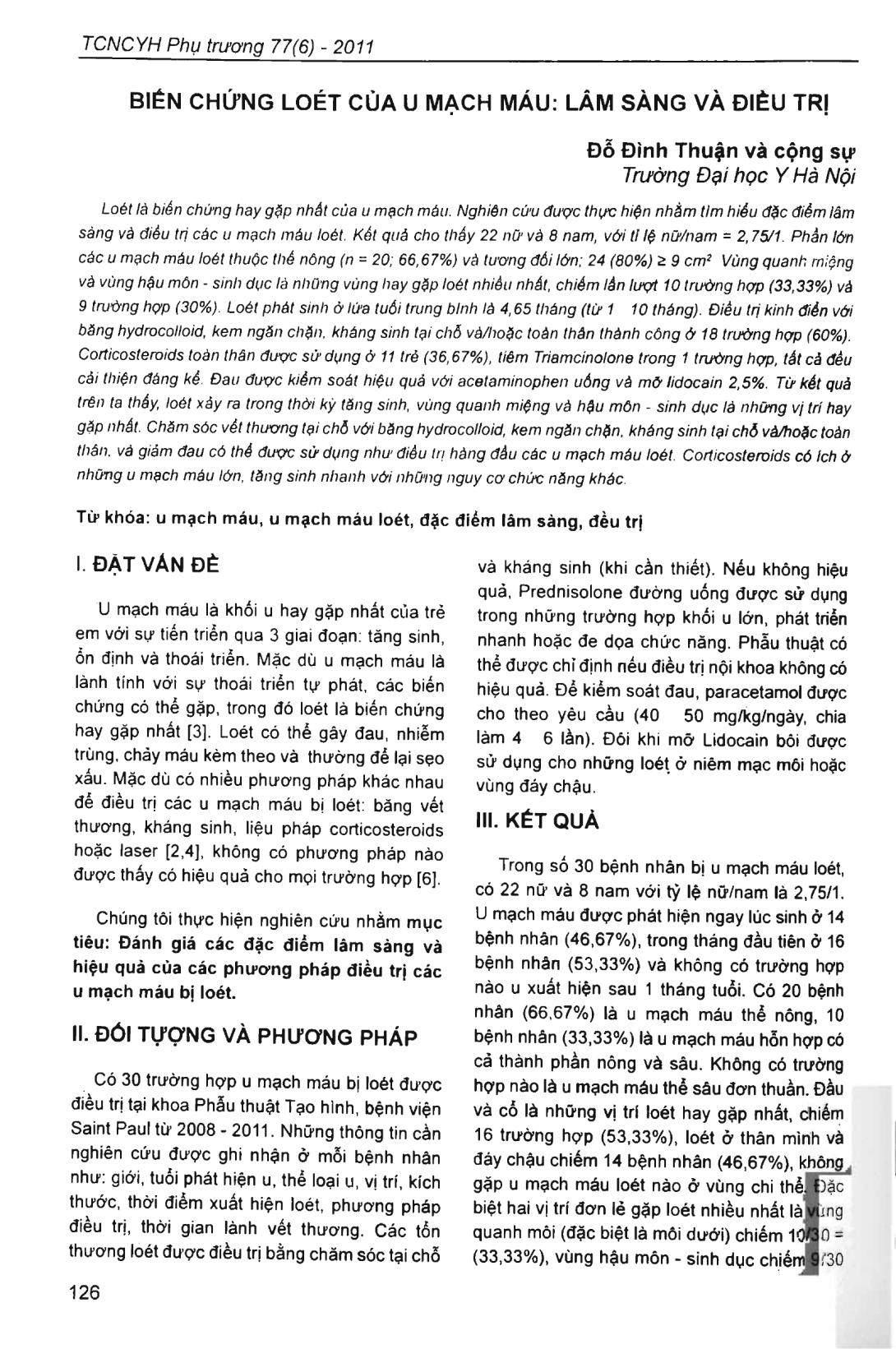
Ulceration is the most frequent complication of hemangiomas. The study was conducted to review the clinical features and management of ulcerated hemangiomas. The result show that 22 female and 8 male patients were seen with a female/male ratio of 2.75:1. The majority of ulcerated hemangiomas were of the superficial type (n= 20; 66.67 percent) and relatively large; 24 (80 percent) were or = 9 cm2. The perioral and anogenital region were the most frequently involved sites, affected in 10 cases (33.33 percent) and 9 cases (30 percent). Ulceration was developed at a mean age of 4.65 months (range,1-10 months). Treatment with hydrocolloid dressings, barrier creams, topical and/ or systemic antibiotics, were successfully used in 18 cases (60 percent). Systemic corticosteroids were used in 11 children (36.67 percent), and intralesional triamcinolone was used in 1 cases (12 percent), with all showing definite improvement. Pain control was effective with oral acetaminophen, and topical 2.5 percent lidocaine ointment. In conclusion, ulceration occur during the proliferative phase. The perioral and anogenital region were the most common sites of ulcerated hemangiomas. Local wound care with hydrocolloid dressings, barrier creams, topical and/or systemic antibiotics and management of pain could de used as the first-line management of ulcerated hemangiomas. Corticosteroids were useful in large, rapidly growing hemangiomas with other functional threatening.
- Đăng nhập để gửi ý kiến
